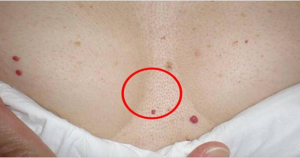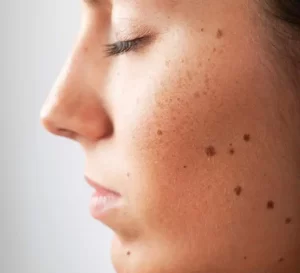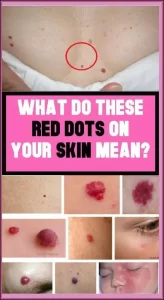Red spots on the skin can appear for various reasons, and while some are harmless and disappear on their own, others require proper attention and treatment. These red dots can manifest in different ways, sometimes as isolated spots and other times as widespread patches. They may be temporary or persistent, depending on their underlying cause. Many people find them concerning, especially if they suddenly appear without an apparent trigger. Understanding the possible causes and effective treatments is essential to managing these skin concerns properly.

Some of the most common causes of red spots include allergic reactions, residual acne marks, vascular birthmarks, angiomas, protein overproduction, heat rash, insect bites, leaking capillaries, and even autoimmune conditions. While some of these may require medical intervention, others can be alleviated with natural home remedies. It is important to determine the cause before deciding on a treatment plan.
Understanding the Causes of Red Spots on the Skin
-
Allergic Reactions: One of the most common causes of red spots on the skin is an allergic reaction. This can result from food allergies, skincare products, laundry detergents, or environmental allergens such as pollen or pet dander. When the body perceives a substance as harmful, it triggers an immune response that can lead to inflammation and red spots.
-
Acne Residual Marks: Many people experience red spots as a result of previous acne breakouts. These post-inflammatory marks occur when the skin experiences trauma from pimples, cysts, or blackheads. Although they often fade over time, they can take months or even years to disappear completely.
-
Vascular Birthmarks: Some red spots are present from birth and are caused by blood vessel abnormalities. These are known as vascular birthmarks and include conditions such as port-wine stains and hemangiomas. While some may fade as a child grows, others can persist into adulthood.
-
Angiomas and Skin Spots Due to Capillary Growth: Cherry angiomas are small, red growths caused by dilated blood vessels. They are typically harmless but can become irritated or bleed if scratched. Some people develop these as they age, while others may have a genetic predisposition.
-
Protein Overproduction: In some cases, an excess of proteins in the body, particularly keratin, can contribute to skin conditions that manifest as red spots. This can be seen in conditions such as keratosis pilaris, which creates rough, red, or white bumps, usually on the arms and thighs.
-
Heat Rash: Also known as prickly heat, this condition occurs when sweat gets trapped in the pores, leading to irritation and inflammation. Heat rash is common in hot, humid climates and can cause small, red, itchy bumps on the skin.
-
Insect Bites: Mosquitoes, fleas, bedbugs, and other insects can cause red, itchy bumps. Some bites may lead to more significant reactions, especially in people with sensitive skin or allergies to insect saliva.
-
Leaking Capillaries (Petechiae and Purpura): When small blood vessels (capillaries) break and leak blood under the skin, they can create tiny red or purple spots known as petechiae. If these spots merge, they may form larger patches called purpura. These conditions can result from injuries, infections, or underlying health problems.
-
Autoimmune Conditions: Disorders such as lupus, psoriasis, and eczema can cause persistent red spots or patches. These conditions often require specialized medical treatments to manage symptoms effectively.
Natural Remedies for Red Spots on the Skin
While medical treatments are available, some natural remedies may help reduce the appearance of red spots, soothe the skin, and promote healing. Below are three highly effective home treatments you can try if you notice red spots on your skin. However, consulting a healthcare professional is always recommended, especially if the condition worsens or does not improve.
-
Aloe Vera Gel Treatment
Aloe vera is widely known for its soothing and healing properties. It is commonly used for sunburns, wounds, and irritated skin conditions. Applying fresh aloe vera gel directly to the affected area can help reduce redness, calm inflammation, and promote skin regeneration.- How to use it: Cut a fresh aloe vera leaf and extract the gel. Apply it to the affected skin twice a day. Let it sit for 15 to 20 minutes before rinsing it off with lukewarm water. Repeat this process daily for optimal results.
-
Coconut Oil Massage
Coconut oil is a natural moisturizer with antimicrobial and anti-inflammatory properties. It helps nourish the skin, lock in moisture, and reduce irritation caused by dry skin or allergic reactions.- How to use it: Gently massage a small amount of coconut oil onto clean skin before bedtime. Leave it on overnight to allow the skin to absorb the nutrients fully. Continue this routine until you notice visible improvements.
-
Dandelion Root Detox Drink
Dandelion is a powerful detoxifying herb that supports liver function and helps eliminate toxins that may contribute to skin problems. Drinking dandelion root tea can aid in cleansing the body from within and improving overall skin health.- How to prepare it: Boil a teaspoon of dandelion root powder in a cup of water for about 10 minutes. Strain the liquid and sip it warm. Drinking this detoxifying tea once a day may help improve skin clarity.
Additional Skin Care Tips to Prevent and Manage Red Spots
Beyond natural remedies, maintaining a healthy lifestyle and proper skincare routine can significantly reduce the likelihood of red spots appearing on your skin. Here are some essential tips:

-
Hydrate Regularly: Drinking plenty of water helps keep the skin hydrated and flushes out toxins that may contribute to skin conditions.
-
Maintain a Balanced Diet: A diet rich in fruits, vegetables, healthy fats, and antioxidants can promote skin health and reduce inflammation.
-
Protect Your Skin from the Sun: Sun exposure can worsen skin conditions and cause hyperpigmentation. Always use sunscreen with an SPF of at least 30 to protect your skin from harmful UV rays.
-
Avoid Harsh Chemicals: Many skincare products contain artificial fragrances and harsh chemicals that can irritate sensitive skin. Opt for gentle, hypoallergenic products.
-
Practice Good Hygiene: Washing your face and body with a mild cleanser can help remove bacteria and excess oils that may contribute to skin irritation.
-
Manage Stress: High stress levels can lead to hormonal imbalances that affect the skin. Practicing relaxation techniques such as yoga, meditation, or deep breathing can help maintain overall skin health.
-
Get Enough Sleep: Sleep is crucial for skin repair and regeneration. Aim for at least 7-8 hours of restful sleep each night.
-
Consult a Dermatologist if Necessary: If you notice that your red spots are persistent, growing, or changing shape, consult a doctor or dermatologist for a professional evaluation.
When to Seek Medical Attention for Red Spots on the Skin
While many cases of red spots are harmless, some may indicate underlying health concerns that require medical attention. Seek professional advice if you experience:

- Red spots that are painful, itchy, or rapidly spreading
- Spots that do not fade over time or worsen despite home treatments
- Symptoms such as fever, fatigue, or joint pain alongside skin changes
- Unexplained bruising or excessive bleeding under the skin
Early diagnosis and treatment can help prevent complications and ensure the best outcome for your skin and overall health.
Final Thoughts
Red spots on the skin can be caused by various factors, ranging from minor irritations to more serious health conditions. Understanding their potential causes and applying the right treatments can make a significant difference in your skin’s health. While natural remedies like aloe vera, coconut oil, and dandelion root tea may offer relief, maintaining a healthy lifestyle and proper skincare routine is key to preventing and managing skin issues effectively. If you notice persistent or worsening symptoms, consulting a healthcare professional is always the best course of action.
By taking a proactive approach to skincare and overall well-being, you can keep your skin healthy and radiant. If you found this article helpful, consider sharing it with your family and friends on Facebook to help others understand how to care for their skin naturally and effectively.





